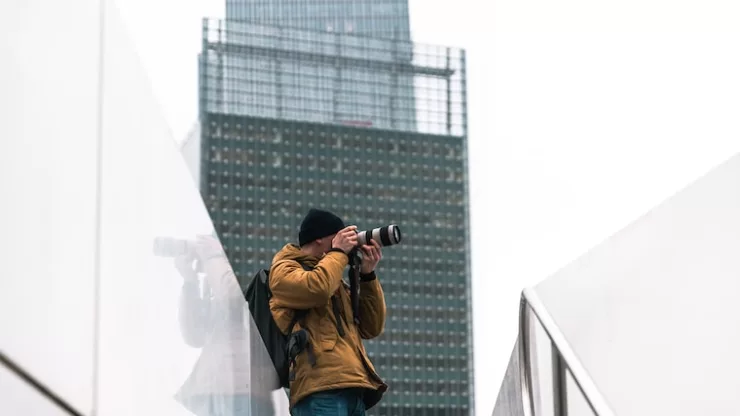Urban wildlife photography can be both challenging and rewarding. The bustling cityscape provides a unique backdrop for capturing wildlife in action.
In this article, we’ll provide you with tips and techniques on how to take stunning photos of urban wildlife.
Jump to Section
Understanding Urban Wildlife
Urban wildlife refers to animals that have adapted to living in urban environments.
These animals have learned to navigate busy streets, avoid predators, and find food and shelter in the concrete jungle.
Some common examples of urban wildlife include pigeons, squirrels, raccoons, and even coyotes or foxes in some areas.
Choosing the Right Equipment
The right equipment can make all the difference in capturing great shots of urban wildlife. A DSLR camera with a telephoto lens is ideal for wildlife photography.
The telephoto lens allows you to zoom in on the subject without getting too close and scaring them away.
A tripod can also be helpful to keep your camera steady and reduce blur in low light conditions.
Finding the Best Locations
Urban wildlife can be found in many locations throughout the city, but some spots are better than others.
Look for parks, gardens, and other green spaces that attract wildlife.
Water sources like fountains or ponds can also be great locations to find animals. Pay attention to the time of day as well.
Early morning or late afternoon is often the best time to capture wildlife in action.
Patience is Key
Photographing wildlife in the wild takes patience, and the same is true for urban wildlife.
Animals may be skittish or wary of humans, so it’s important to be patient and wait for the right moment.
If you’re trying to capture a specific animal, observe its behavior and movements to anticipate when it might make a move or show its face.
Be Mindful of Your Surroundings
When photographing urban wildlife, it’s important to be mindful of your surroundings. Be respectful of the animals and their habitat, and avoid disturbing them.
Keep a safe distance and avoid getting too close.
Also, be aware of your own safety, especially in areas where there may be potential risks such as traffic or other hazards.
Using Light to Your Advantage
Lighting is key to taking great photos, and the same is true for urban wildlife photography.
Natural light is often the best choice, especially during the early morning or late afternoon when the light is soft and warm.
Try to position yourself so that the light is behind you, illuminating your subject.
Avoid harsh, direct sunlight as it can create harsh shadows and wash out your subject.
Capturing Action Shots
Action shots can be some of the most exciting and memorable photos in wildlife photography. To capture these shots, use a fast shutter speed to freeze the action.
Continuous shooting mode can also be helpful to capture multiple shots in a row. Be patient and wait for the right moment to capture the perfect action shot.
Editing Your Photos
Editing can be a crucial step in taking your photos to the next level. Use editing software to adjust exposure, contrast, and color balance to enhance your photos.
Avoid over-editing and aim for a natural-looking final product.
Conclusion
Urban wildlife photography provides a unique opportunity to capture stunning photos of wildlife in the heart of the city.
To achieve great results, it’s important to choose the right equipment, find the best locations, be patient, and be mindful of your surroundings.
Remember to use light to your advantage, capture action shots, and edit your photos to enhance their impact.
FAQs
What type of camera is best for urban wildlife photography?
A DSLR camera with a telephoto lens is ideal for wildlife photography.
What time of day is best for urban wildlife photography?
Early morning or late afternoon is often the best time to capture wildlife in action.
How can I capture action shots of urban wildlife?
Use a fast shutter speed and continuous shooting mode to capture multiple shots in a row.
Is it safe to photograph urban wildlife?
Be mindful of your surroundings and avoid disturbing the animals or putting yourself in danger.
Can I edit my photos to enhance their impact?
Yes, editing software can be helpful in adjusting exposure, contrast, and color balance to enhance your photos.
I’m a nature enthusiast and creator of Metro Wilds and have spent years exploring the great outdoors.
With a passion for environmental conservation and sustainability, I have dedicated my career to writing about the beauty and wonders of nature, as well as the threats facing our planet.
Contact me at [email protected] for assistance.





